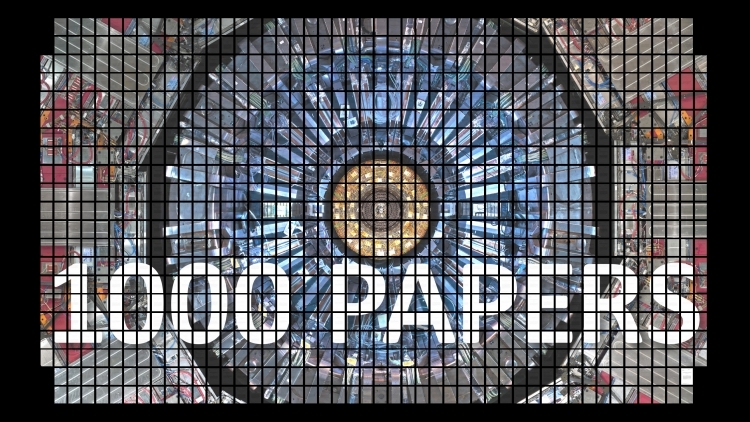In June 2020, The Compact Muon Solenoid (CMS) collaboration announced the submission of its 1000th scientific publication since the experiment began a decade ago. With multiple University of Wisconsin–Madison physics faculty involved in CMS over the years, the physics department wanted to use this milestone to celebrate their achievements.
CMS is an international collaboration of over 4000 scientists at CERN’s Large Hadron Collider, which churns out data that have contributed immensely to our understanding of particle physics and pointing directions to moving beyond the Standard Model. Amongst its achievements, CMS announced in 2012 the discovery of the Higgs boson, along with ATLAS collaboration.
UW–Madison’s Professor Emeritus Don Reeder, Professor Emeritus Wesley H. Smith, Emeritus Distinguished Scientist Richard Loveless and Professor and current department chair Sridhara Dasu are amongst the founding members of CMS. The team later expanded to include Professor Matt Herndon and Senior Scientists Dr. Sascha Savin and Dr. Armando Lanaro. In 2018, Professor Kevin Black and Professor Tulika Bose joined the physics department.

“It’s a proud moment for CMS in general and for the UW CMS group to see our work over the years culminate in this historic milestone!” says Bose, who currently serves as the Deputy U.S. CMS Software and Computing Operations program manager. “We are looking forward to more with the upcoming run and with the High-Luminosity LHC upgrade.”
Of the current UW–Madison physics faculty involved:
- Sridhara Dasu currently leads the UW–Madison High Energy Physics group. On CMS, his focus is in better understanding the Higgs boson, searching for its partners, and possible new physics connections, especially to dark matter. He helped design the CMS calorimeter trigger system and continues to dabble in designing its upgrades.
- Matthew Herndon is involved in the ongoing upgrade of the CSC (cathode strip chamber) forward muon system and well as detailed studies of the performance of the CSC system. He studies the physics of multiple gauge boson interactions and associated new physics phenomena involving multiple gauge bosons.
- Tulika Bose previously served as the Physics Co-coordinator (PC) of the CMS Experiment during 2017-2019 and as the CMS Trigger Co-coordinator (2014-2016). In addition to her current program manager role, she is involved in physics studies that cover both precision measurements of Standard Model processes as well as direct searches for new physics including dark matter and top quark partners.
- Kevin Black joined CMS when he joined the UW–Madison physics department in 2018, after 13 years on the CMS companion experiment ATLAS. Since then, he has been involved in the forward muon upgrade project — which will install GEM (Gas Electron Multiplier) detectors — as manager of the U.S. component of the electronic readout project and as deputy run coordinator of the GEM system. His group is focusing on the data-acquisition development for that system.
“I am especially proud of our eighteen PhD graduates who have contributed about two papers each to this set of thousand; one on a search for new physics channel and another on a carefully made measurement,” Dasu says.
Adds Herndon, “It’s an amazing milestone and a testament to the scientific productivity of the CMS experiment! UW personnel, especially our students, have been a major part of that achievement contributing to nearly 100 of those papers.”
In collaboration with the Physical Sciences Laboratory, the UW Physics team helped design the steel structures and other mechanical systems of the CMS experiment, especially leading the installation, commissioning and operations of the endcap muon system. The UW Physics team has also helped design, build, install and operate the electronics and data acquisition systems, in particular the calorimeter trigger system, and began collecting data from day one of LHC operations. They also collaborated with the HT Condor group of the Department of Computer Science to design and build the Worldwide LHC Computing Grid (WLCG), hosting one of the productive Tier-2 computing centers in Chamberlin.
The UW–Madison group was a key player in the discovery of Higgs boson in 4-lepton decay mode and establishing its coupling to fermions. The group has also searched for new physics especially looking for evidence of beyond the standard model in the form of heavy Higgs bosons that decay to tau-pairs. The group also upgraded the calorimeter trigger system and completed the endcap muon chamber system for the second higher energy run of the LHC. Searches continue for new Higgs partners, rare decays of the SM-like Higgs boson, and searches for new particles. They have added to our repertoire a series of searches for anomalous production of single high energy objects that are indicative of dark matter production in the LHC collisions.
The abundant production of papers proclaiming discoveries or the best measurements to date were possible in large part because of numerous UW–Madison electronics and computing personnel.
“The publication of the 1000th paper of the CMS collaboration is a significant milestone capping the achievement of thousands of physicists worldwide on a wide range of topics that can only be made at this unique instrument and facility,” Black says.